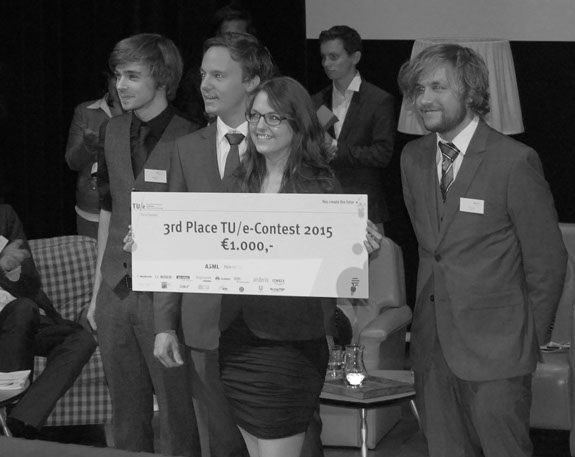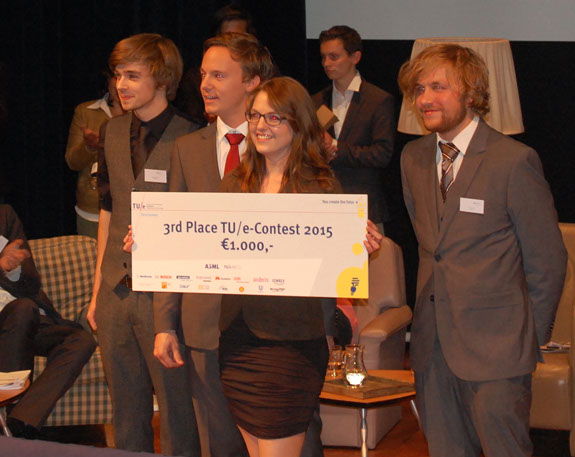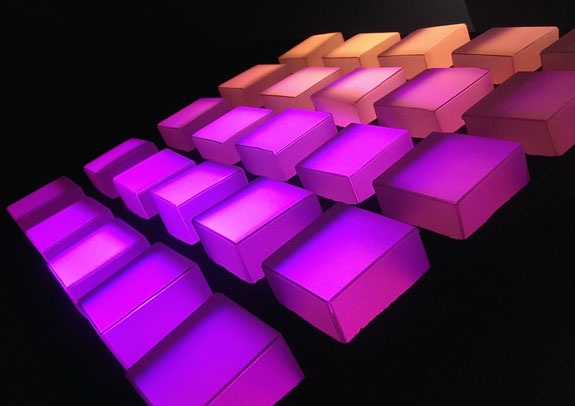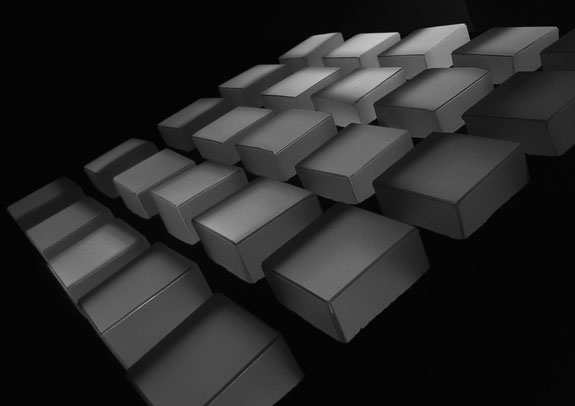Final Bachelor Project
Below is a summary of all the projects I have done during my Bachelor at Industrial Design, starting with my final bachelor project. Scroll down for previous projects.
Network
We see a growing trend in the world’s mobile working population and the correlating trend of working at flexible offices, like Seats2Meet. People go there to work on projects, but mostly to meet people who can help them. As work becomes more flexible and communication more mobile, the office is turning into an increasingly complex and even abstract concept.
Network is a check-in system for flexible offices, connected to an online social platform, allowing you to meet the right people more easily. Every workplace in the office will have a physical check-in device, which is also used for notifications. When you arrive at your workplace, simply check in using your token and you will be registered as present at the particular office.
Using the application, you can see who is present at this particular office (next page, middle left picture), who has made reservations for a workplace later that day, and a list of all people who have ever visited the office in question. You will have your own profile in this application (far left), which can be synchronised with LinkedIn. You can also search for people based on their Area of Expertise (far right).
On people’s profiles, you can mark them as ‘’interesting’’ (middle right) so when this person checks in, you will get a notification on your device, so you can go and find the person you are looking for.
Below is a video explaining the concept. Click here for the report.
Reflection
First off, I have acquired a set of skills that I believe are necessary abilities for me graduating as a bachelor Designer. Among others, I learned how to model in 3D, adapt them to make them mechanically feasible and possible to print, make renderings (page 33), selecting 3D printing techniques, and printing the parts. I learned more about electronics and coding during prototyping, about data flows and how much more than previously known is involved in this process, and about application design.
Furthermore, I learned more about how to perform structured research, using scientifically based research methods like a context mapping, how to analyse great amounts of qualitative data using audio/video transcriptions and affinity diagrams, and how to translate into design guidelines.
Most of all, I learned a lot about myself during my final bachelor project. The biggest lesson I learned is that I am definitely a team player. I’m more productive in a team, more motivated, more structured, and I don’t like working on my own. I struggled tremendously with the lack of direct feedback from teammates.
Over the years, I noticed that I am a natural leader in teams. Structuring and giving direction to a team, motivating and coordinating it are things I am, and have become very good at. I’m good at separating essentials and inessentials, and directing all efforts towards the essentials. So I’m good at the bigger picture and making big decisions, but when it comes to details like actually making cultural probes (or report writing for that matter), I often find myself being impatient and wanting to take new steps forward instead of thinking about details, which is not always a good thing.
Having said that, I struggled quite a lot with setting direction and goal on my individual process, because of the lack of direct feedback, which you would get in a team. Without the direct feedback, the process can quickly become abstract and feel subjective, and this is when I tend to lose myself in doing things that are less abstract, but sometimes also less relevant, hence delaying my design process because I don’t get around to the more abstract aspects (i.e. ideation). This, in combination with my ambition to perform ever bigger and better at everything and my inability to say ‘’no’’, caused me to have a rain check on my desired results from time to time and rethink my strategy.
Overall, I am happy with the result so far, and look forward to taking the next steps.
B2: Mirrorcle
Mirrorcle was my project during the second year of my Bachelor at Industrial Design.
Mirrorcle
Mirrorcle is an innovative concept that helps you do physiotherapeutic exercises and helps you recover faster. It uses motion tracking technology to measure the position of your back and displays direct visual feedback on the screen. The project was such a succes, being loaded with positive reactions from our client, physiotherapists, and the TU/e Contest, it led me to continue with the project in the semester, so I spent a full year on the Mirrorcle project.
During this project, I learned a lot about design and research processes, basing every design decision on scientifically based arguments, involving experts in the process. I learned, among others, about the importance of business in further stages of the design process, about communication strategies and about intellectual property protection.
Click here for the report on semester 1, here for semester 2.
TU/e Contest
Entering the TU/e Contest helped greatly in realising that things were becoming more and more serious, and there was true potential in the Mirrorcle. This contributed to me handling the project with an even more professional attitude. Setting up a campaign to gain as many votes as possible taught me about strategic thinking in publicity, and contributed to my communicative skills. It also allowed me to create contacts within several companies, so it was a great networking opportunity too. We managed to come third in the contest!
Click on the picture to view our promotional video, or click here.
B1 projects
Below is a summary of the projects I did during my first year at Industrial Design.
B1.1: The LedMatron 2000
My very first project at Industrial Design, under the category Humanising the Interaction with Light. It introduced me to vastly different the educational model, responded to my passion for lighting and taught me the basics of electronics and programming. It was a lighting interface where the colour of the light would become warmer if you came closer to it. Please excuse us for the name of the project.
Click on the picture for a concept video, for the report click here.
B1.2: Kika Play: Doedel
A project on behalf of the Prinses Maxima Centrum, a new wing to a hospital entirely dedicated to the curing of children with cancer, where the goal was to make the hospital a less frightening place. I learned a lot about socio-cultural awareness and user focus perspective because of the constant physical and mental restraints these children experienced. The concept was that children could make drawings, these would be animated and projected on a screen, and they could interact and play with the drawings.
The report can be found here.
Archive



